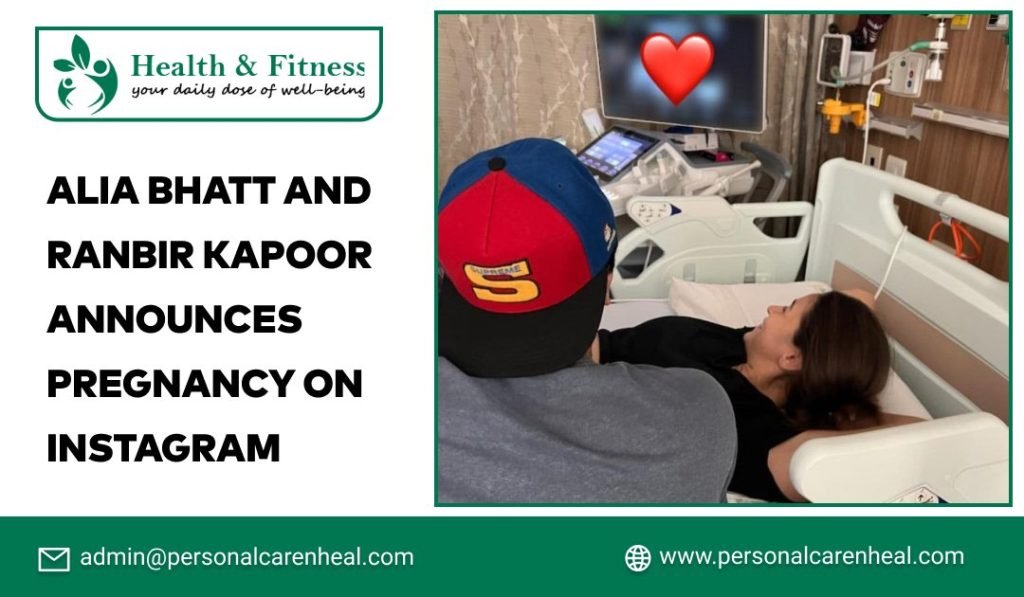First-time parents Alia Bhatt and Ranbir Kapoor are expecting a child. The actress shared the good news with everyone by using Instagram. The two are expected to become parents in November, according to reports. Priyanka Chopra, Rakul Preet, Karan Johar, Anushka Sharma, and a number of other celebs congratulated the soon-to-be parents in the comment section.
The actress informed her followers of the good news via her official Instagram account. As the couple underwent sonography, the 29-year-old uploaded a photo of herself and her spouse Kapoor. The actress wrote, “Our baby.. coming soon.”
Two lions and a lion cub are depicted in Bhatt’s second photo in her post. Fans of the couple deluged Bhatt’s post with congratulations and well wishes.
Pregnancy – Week by Week
While the usual pregnancy (gestation) lasts 40 weeks, the unborn child spends about 38 weeks in the womb. This is so that pregnancy is not counted from the date of conception, which is often two weeks later, but rather from the first day of the woman’s last period.
There are three trimesters during pregnancy:
- From conception to 12 weeks, the first trimester
- 12 to 24 weeks into the second trimester
- 24 to 40 weeks is the third trimester.
Conception
When the male sperm fertilizes the female ovum (egg), which is the moment of conception. In that instant, the gender and hereditary traits are decided.
Week 1
Your period occurs throughout this first week. This week counts toward your 40-week pregnancy even though your baby has not yet been created because your expected birth date (EDD or EDB) is determined from the first day of your most recent period.
Week 2
Near the conclusion of this week, your egg will be fertilized by your sperm.
Week 3
The cell divides into two, thirty hours after fertilization. The cell (zygote) has divided into 16 cells three days later. The zygote has moved from the fallopian tube to the uterus (womb) after an additional two days. The zygote inserts itself into the thick uterine lining seven days after conception (endometrium). A blastocyst is a current name for the zygote.
Week 4
The developing infant is smaller than a rice grain. The digestive system is one of the many bodily systems that are currently being formed by rapidly proliferating cells.
Week 5
The central nervous system will eventually develop from the developing neural tube (brain and spinal cord).
Week 6
The child is now referred to as an embryo. Its length is about 3 mm. By this time, it begins releasing certain hormones that stop the mother’s menstrual cycle.
Week 7
The pulse is present. The placenta and amniotic sac of the embryo has grown. In order to get oxygen and nutrients from the mother’s bloodstream, the placenta is penetrating the uterine wall.
Week 8
The embryo is currently about 1.3 cm long. The spinal cord’s spiral growth resembles a tail. The head is excessively huge.
Week 9
The tongue, lips, and eyes are developing. The embryo can begin moving with the help of tiny muscles. Embryo’s liver produces blood cells.
Week 10
The approximately 2.5 cm long embryo is now referred to as a fetus. The body’s organs are all formed. Previously appearing as nubs or paddles, the hands and feet are now evolving into fingers and toes. Brain waves occur and the brain is active.
Week 11-20
- Inside the gums, teeth begin forming. The small heart continues to grow.
- Recognizable fingers and toes are still connected by webs of flesh. This is a good moment to perform the first trimester combination screening test (maternal blood test + baby ultrasound). Trisomy 18 (Edward syndrome) and trisomy 21 (Down syndrome) are detected by this test.
- The fetus is capable of vigorous swimming. Its length has increased to about 7 cm.
- Over the completely formed eyes, the eyelids are joined. Now that it has voice cords, the newborn can mutely cry. It might even begin to thumb-suck. Nails are developing on the fingers and toes.
- The fetus measures about 14 cm long. The tongue has tastes, and eyelashes and brows are now visible. If the first-trimester test was not performed, the second-trimester maternal serum screening will be made available at this time.
- There will be ultrasonography suggested. This fetal morphology scans will look for various pregnancies, structural and placental abnormalities. It is interesting to note that hiccoughs frequently occur in fetuses.
- The fetus measures about 21 cm long. The ears can pick up faint sounds from the outside world and are totally functional. Fingerprints are present. An ultrasound scan may now distinguish between the genitalia.
Week 24-40
- The fetus is around 33 centimeters long. The baby can now open and close its eyes with the help of separate upper and lowers lids of the formerly fused eyelids. Fine hair (lanugo) and a waxy secretory layer cover and protect the skin (vernix). The infant’s lungs are moving as it breathes.
- Baby’s weight and length are now approximately 1 kg (1,000 g) or 2 lb 2 oz (two pounds, two ounces) from crown to rump, respectively. Around 37 cm is the length from crown to toe. The infant now appears more proportionate as the developing body has caught up to the big head.
- The infant is asleep most of the time. It moves forcefully and precisely. By now, it has likely assumed the “head down” posture in readiness for birth.
- The infant measures about 46 cm in length. In preparation for birth, it has likely tucked its head into its mother’s pelvis. Its odds of surviving are very good if it is born right now. Over the next few weeks, the lungs rapidly develop.
- The infant is nearly 51 cm long and prepared to be birthed. The specific reason why labor starts is uncertain. The mother and the baby are most likely affected by a combination of physiological, emotional, and hormonal variables.
Final Say
We truly hope that you got all the information regarding pregnancy weeks. Personal Care N Heal also offers more information regarding health, food, mental health, fitness, cycling, etc., which you can read for the betterment of your life.



